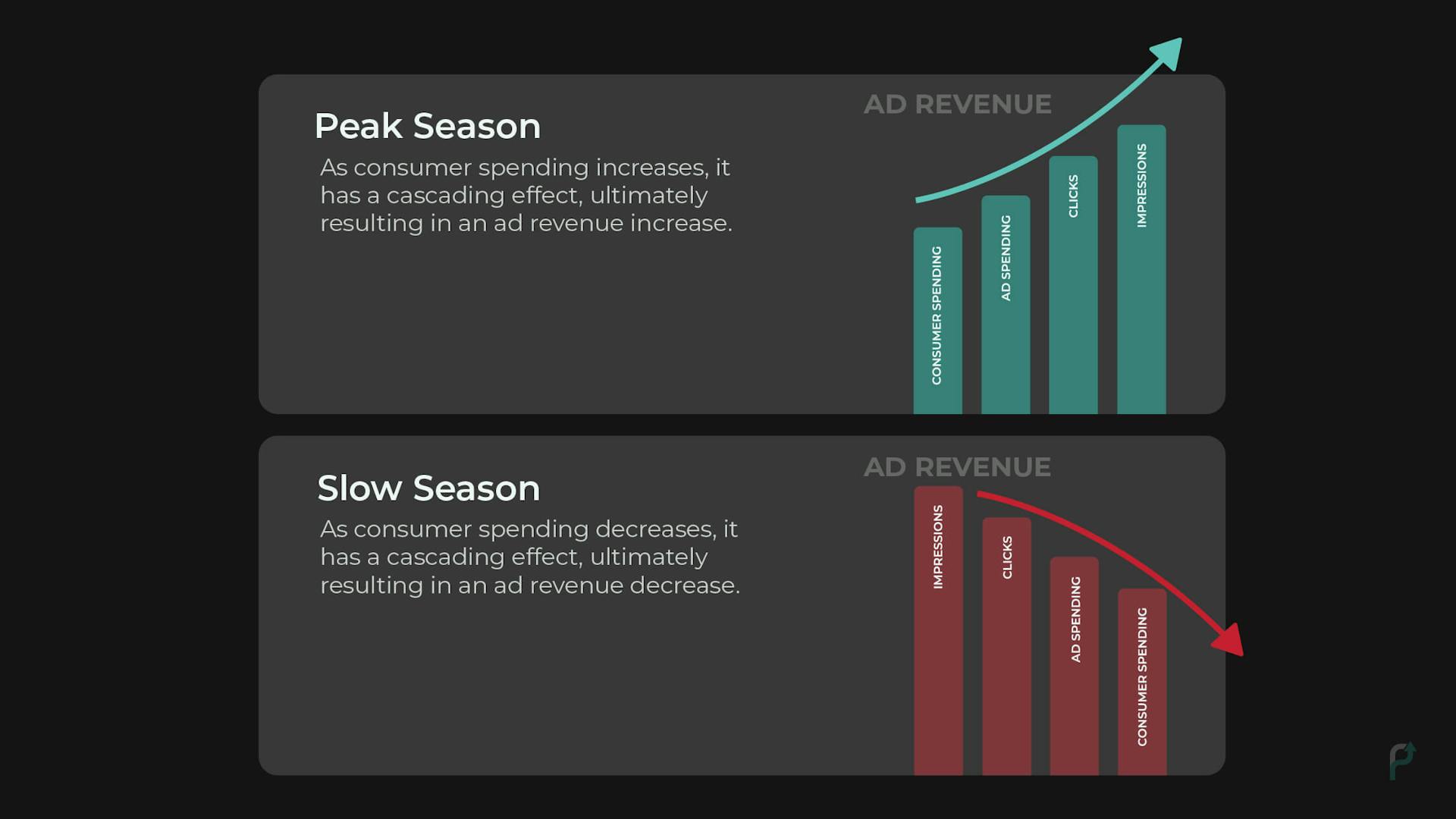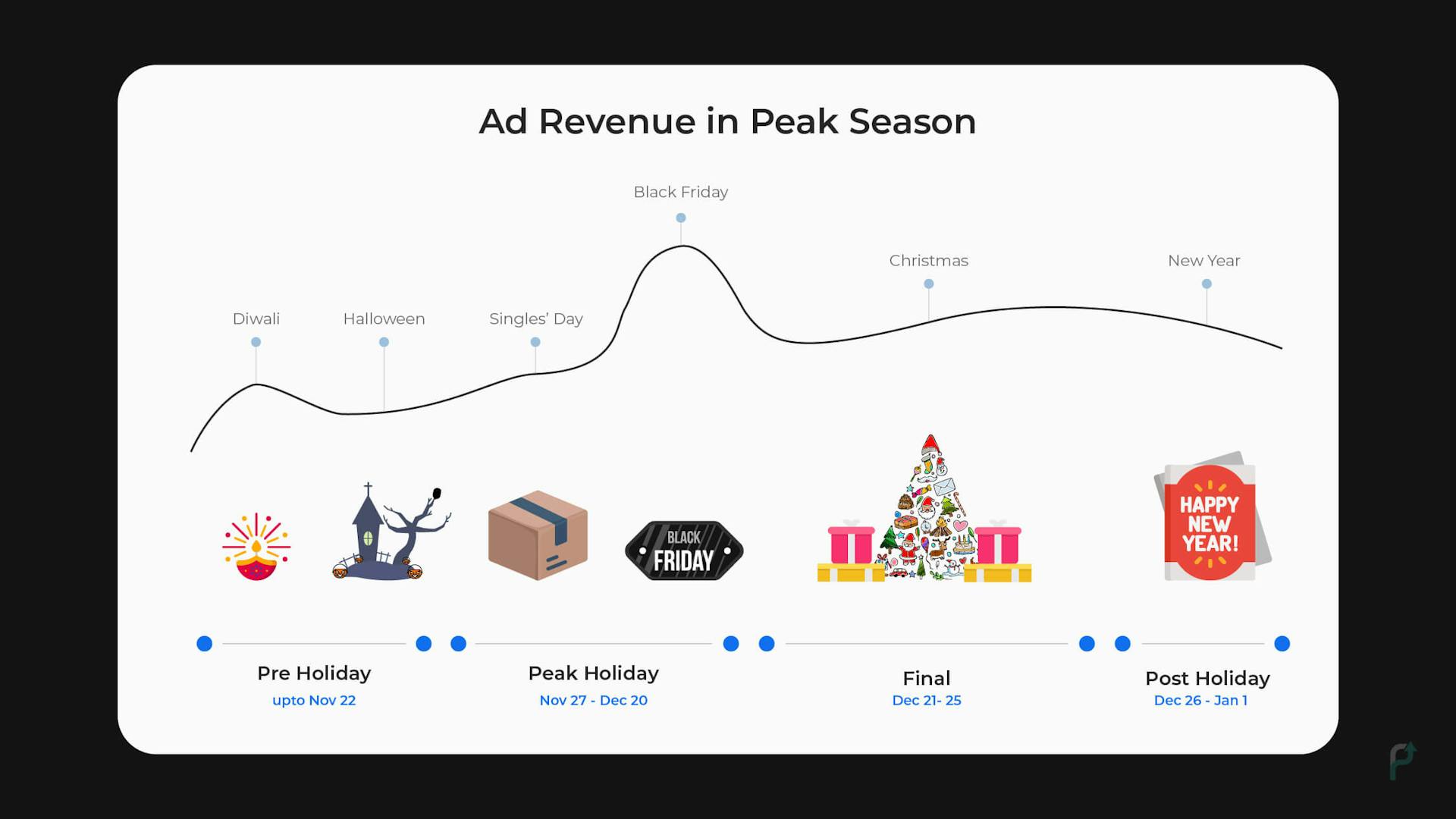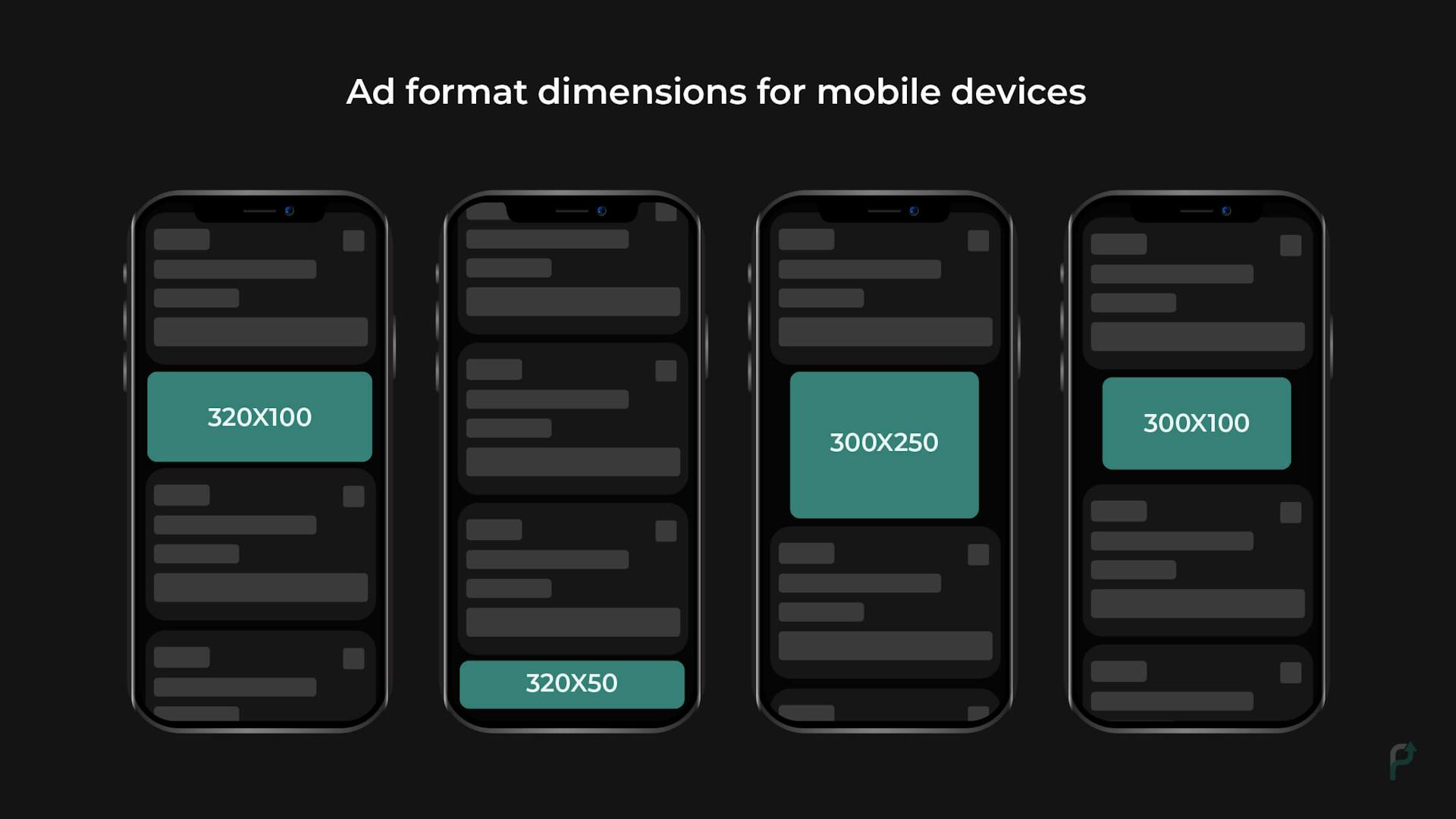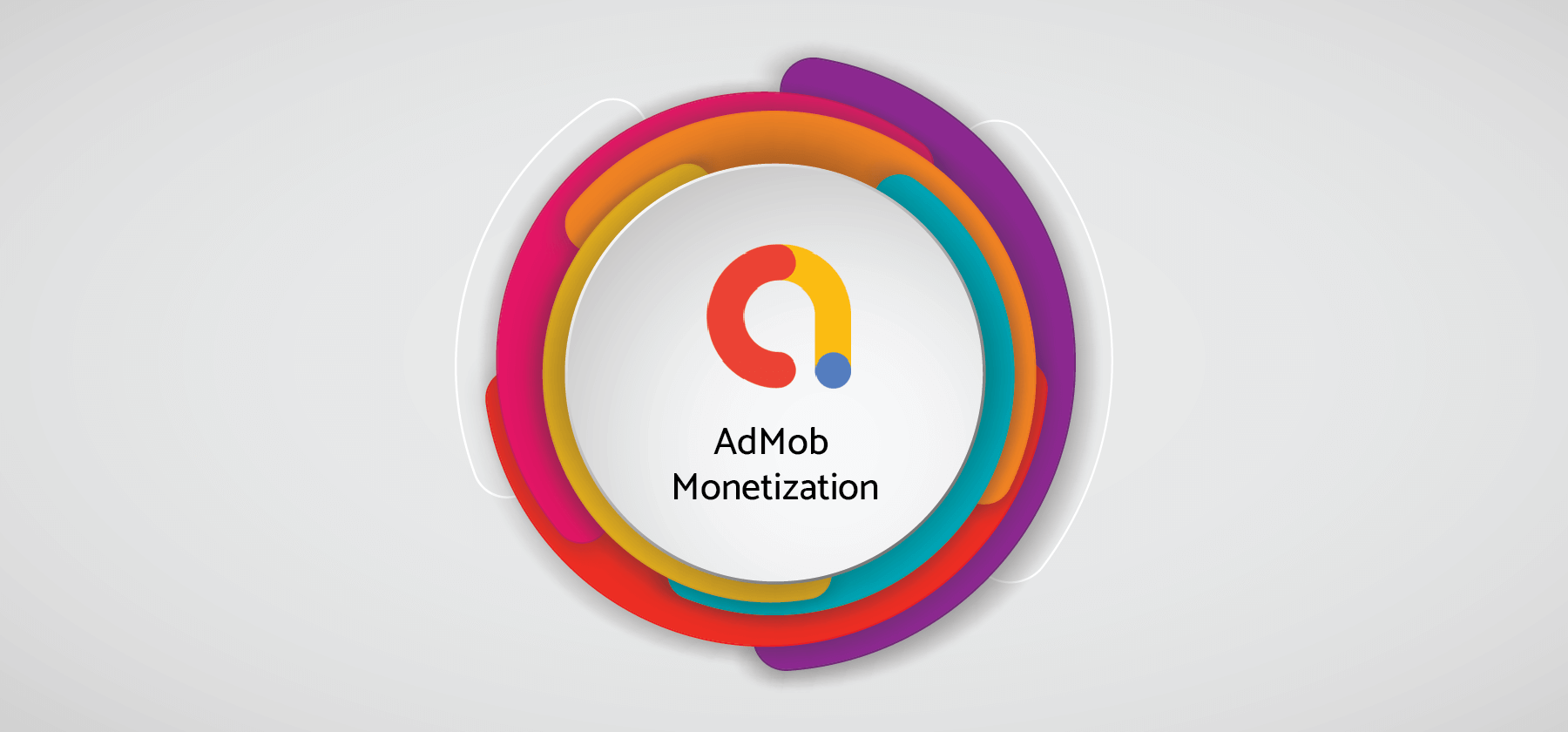In the dynamic landscape of AdTech, it is important to understand how ad revenue fluctuates with every season. It is not merely a pattern but an interplay of consumer behavior, industry trends, and global events that impact many businesses. From peak seasons brimming with high engagement to quieter periods that challenge revenue streams, the seasonality of AdTech is a critical aspect that demands attention and strategic foresight.
First, let’s briefly understand how seasonality influences ad revenue.
Seasonality and ad revenue
Seasonality in ad revenue mirrors the fluctuations in consumer behavior. So, publishers need to understand this trend to plan their finances better. Here is how seasonality influences ad revenue:
 Revenue across different seasons
Revenue across different seasonsCurious about how seasonality will impact your ad revenue? Talk to our experts and optimize your ad revenue throughout the year.
Peak seasons
Peak seasons refer to holidays or major events that witness an upsurge in consumer spending. Advertisers usually try to harness this heightened user activity, causing the clicks and ad impressions to increase as well. The year-end holiday season, for instance, usually triggers an increase in spending. This, in turn, elevates ad demand and revenue.
Slow seasons
After the peak season, there is a decline in consumer spending. Advertisers might experience reduced ad demand and thus, lower engagement, directly impacting the revenue. For instance, right after the holidays, consumers are reluctant to spend as much due to the increase in spending a few months back. This behavior impacts ad revenue as well.
Ad revenue and recession
Recessions and economic downturns can significantly impact ad revenue beyond seasonal fluctuations. The reasons for such a phenomenon are as follows.
A shift in consumer behavior
A recession affects businesses across industries, leading to a cash crunch phenomenon. This can cause consumers to change their spending habits. Advertisers might reduce marketing budgets, causing a decrease in ad spend.
Industry-specific challenges
Industries deemed non-essential (jewelry, travel) usually experience a pronounced decline in ad spend. This will directly impact publishers catering to these sectors.
Seasonality trend broken down quarter-wise
Organizations divide a year into four quarters- Q1, Q2, Q3, and Q4. We will analyze the ad revenue fluctuations that take place quarter-wise.
Looking to boost revenue effortlessly? Uncover tailored strategies for each quarter and stay ahead.
-
Q1- January, February and March
The first quarter, encompassing January, February, and March, often witnesses what is referred to as the "January slump". This period is when advertisers focus on planning for the year ahead. This leads to reduced spending on ad campaigns.
Additionally, since this period falls after the holiday season, it undergoes a significant shift in users' purchasing behavior. Consumers tend to tighten their spending habits and the inclination towards extravagant purchases is less, resulting in a dip in consumer engagement.
Thus, for publishers, Q1 can be challenging in terms of revenue generation. The reduced spending by advertisers can cause a decline in sales and a surplus of ad inventory. Consequently, more ad space is often sold through programmatic channels, aiming to offset the decrease in effective Cost Per Mille (eCPM).
The beginning of this quarter can witness a drop in eCPMs due to a dip in direct sales. However, the latter part of the quarter might witness a return to a more regular advertising landscape as strategies solidify.
-
Q2- April, May and June
The second quarter, which comprises April, May, and June, usually witnesses a major shift in spending and is considerably a better period for publishers. Q2 witnesses a substantial increase in ad spending. Advertisers would have charted out their strategies and will now actively allocate budgets for various campaigns. This quarter will essentially function as a sandbox for experimentation for advertisers.
Further, publishers will witness higher revenue generation as advertisers start investing in diverse campaigns. This ensures that publishers benefit from increased ad placements and engagement.
However, it is important to note that Q2 marks the end of the financial year thus, businesses aim to exhaust their budgets. So, a flurry of last-minute spending is likely to occur, ensuring that allocated funds are utilized effectively, contributing to heightened advertising activity. This late-quarter peak often signifies the culmination of the financial year for advertisers and agencies, resulting in a spike in revenue for publishers.
-
Q3- July, August and September
Quarter three comprises July, August, and September and is characterized by the "July slump". While it is not as severe as the January slump, it witnesses a significant dip in revenue for publishers, due to specific trends in consumer behavior and advertiser budgets.
In Q3, there is usually a decline in online traffic that varies across different publisher niches. The summer season usually prompts people to spend time outdoors, reducing online engagement. This impacts the overall ad impressions and subsequently revenue. Furthermore, advertisers usually reassess and revise their budgets.
Publishers can witness a slump in their revenue due to decreased user engagement and the reevaluation of budgets by advertisers. However, as the quarter progresses and the initial dip is over, Cost Per Mille (CPM) rates might witness an upswing, offering a potential compensation for the earlier revenue decline.
-
Q4- October, November and December
The final quarter spanning October, November, and December, is marked by a surge in revenue generation and heightened advertising activity. This period witnesses holidays and festive occasions, presenting the perfect stage for publishers to capitalize on increased online engagement and ad spending.
The holiday season causes a spike in user presence online and offers the perfect opportunity for increased ad placements and engagements. Brands recognize the significance of being prominently seen during this peak period of user engagement. Consequently, they allocate substantial budgets for extravagant ad campaigns, aiming to capture the attention of an extensive online audience.
Cost Per Mille (CPM) rates soar during Q4, remaining high throughout the winter months leading up to Christmas and New Year. This surge contributes to the revenue optimization for publishers, as advertisers compete for premium ad placements to reach their audience.
 Ad revenue in peak season
Ad revenue in peak seasonReady to implement these strategies and elevate your revenue? Start incorporating these tactics today.
Optimizing revenue through all the quarters
Learning how to optimize ad revenue throughout the year is important, regardless of the challenges each quarter presents. Since each quarter contains a diverse set of challenges, it is important to have a customized, quarter-wise strategy to maximize revenue.
-
Quarter 1
Q1 is marked by a slump thus, publishers need to think of novel ways to ensure a steady stream of revenue. There are many strategies they can employ to achieve this.
Publishers must experiment with different ad units, placements, and formats to understand what resonates with the audience. They can try to incorporate innovative ad layouts to add value to the inventory. Additionally, publishers can experiment with adjusting the CPM floor incrementally to find the balance between higher CPMs and selling more ad inventory.
Further, they can create new Private Auctions tailored for the season (e.g., "Q1" or "Winter") and set higher floor CPMs than the yearly average. Publishers can also use naming conventions and floor eCPM increases to attract higher bids and potentially boost revenue.
Publishers also need to learn to capitalize on seasonal events. They need to leverage events in February like the Super Bowl, or Valentine’s Day to boost revenue. By tailoring ad campaigns and content around these events, they can attract targeted audience engagement.
Additionally, they need to monitor and optimize their app health through App Store Optimization (ASO) and consult ad ops professionals to effectively monitor and improve app performance.
-
Quarter 2
Q2, when compared to Q1, is marked by increased advertiser activity and improved app performance, which requires strategic optimization to harness the influx of ad spend and heightened user engagement.
Publishers can start by leveraging the surge in ad spend. They can monitor industry trends like rising CPCs to gauge the impact of seasonality on advertising costs and adjust strategies accordingly.
Further, by noticing the uptick in traffic and engagement from Q1, publishers can marginally increase the floor price for your ad inventory to amplify revenue generation. They must also assess the impact of floor price adjustments on ad fill rates and Page RPM to strike a balance between revenue and inventory sell-through.
Publishers also need to assess the performance of the ad formats they experimented with in Q1. By evaluating this and switching to ad formats that contribute to increased revenue, publishers can maximize their revenue better.
Additionally, publishers must be adaptable and responsive to changes in user engagement, advertiser behavior, and industry dynamics throughout Q2.
-
Quarter 3
Q3 usually performs better than Q1 despite the July slump but not as well as Q2. However, it still requires attention and optimization and involves strategic adjustments and forward-thinking preparations for Q4.
Publishers can begin Q3 by marginally reducing the floor price for inventory to stimulate ad dales, reassess, and then potentially increase it mid-quarter. Publishers need to constantly readjust and fine-tune floor prices to identify the optimal balance between revenue and fill rates.
Further, publishers need to learn to capitalize on significant events like the 4th of July and Labor Day. This is to tailor ad campaigns and content, tapping into increased user engagement during these periods.
Publishers must also use Q3 as a testing ground to identify and finalize ad formats, placements, and units that resonate best with the audience and help in optimal revenue generation. It also helps publishers make informed decisions and be better prepared for the upcoming quarters.
-
Quarter 4
Q4 is often regarded as the brightest period for publishers since it presents multiple opportunities for easy revenue generation. Publishers first need to stay mindful of the diverse holidays and events in this quarter and optimize their inventory to attract users, ensuring the delivery of targeted and engaging content.
Publishers must initiate Q4 by testing all essential aspects of their app- an effective traffic generation strategy, reducing page latency, and ensuring peak performance. Next, publishers must optimize their ad creatives to enhance ad viewability and capitalize on the surge in browsing activity.
Publishers must consider elevating floor prices during this quarter to maximize revenue returns. This strategic move can harness increased advertiser spending and higher demand for ad inventory.
Additionally, publishers need to focus on high-performing ad sizes and formats recommended for different devices. Prioritize ad sizes such as 728x90, 300x250, 336x280, 300x600, and 160x600 for desktop and 320x100, 320x50, 300x250, and 300x100 for mobile, ensuring enhanced visibility and effectiveness of your ads.
 Ad format dimensions
Ad format dimensionsIt is also important to track user engagement and access app performance. Publishers can utilize tools like Google Analytics and Google Ad Manager for continuous optimization and improved performance.
In Conclusion
Publishers must understand the nuanced rhythms of seasonality in the programmatic world to know how to optimize revenue throughout the year. As highlighted by this article, each quarter comes with its own set of challenges and opportunities that directly impact ad revenue. Navigating the fluctuations demands a thorough understanding of how each quarter functions and an air-tight strategy. From the low tides of Q1 to the promising highs of Q4, every quarter offers the chance to learn, and fine-tune strategies and revenue-generation techniques.
By following these insights and implementing a proactive approach that aligns with the ebb and flow of the seasonality, publishers can steer their revenue up effortlessly and sustainably.
The only ad platform built for developers by developers.
Contact us now for a product that fits your needs! It’s quick, simple and easy.



